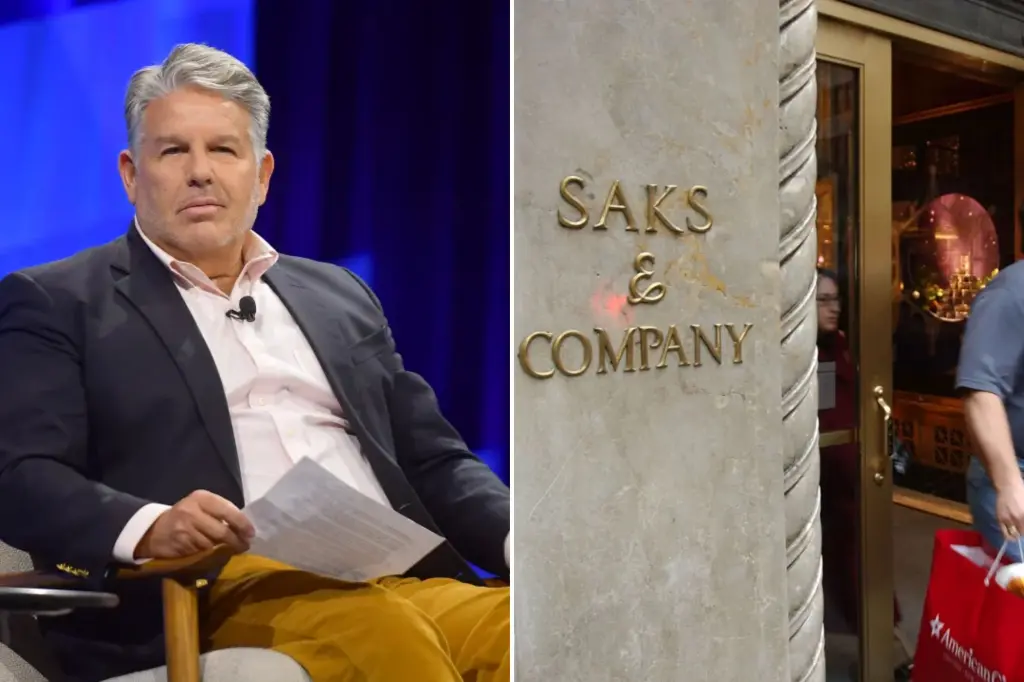Saks Global’s Legal Battle with Puck News: A Case of Journalism Ethics and Corporate Reputation
Luxury retail giant Saks Global has initiated a high-profile lawsuit against Puck News, alleging that the media outlet published a series of damaging articles without disclosing what the company calls a significant conflict of interest. At the center of this legal dispute is William D. Cohan, a prominent financial journalist and author known for works like “House of Cards” about the 2008 financial crisis. According to the lawsuit filed in Delaware state court, Cohan wrote numerous articles throughout 2022 suggesting Saks Global was on the brink of bankruptcy—claims the retailer vehemently denies. The retailer, which owns prestigious brands like Saks Fifth Avenue and acquired Neiman Marcus last year in a $2.8 billion merger that created the world’s largest luxury retail entity, asserts these articles have cost them “hundreds of millions of dollars” in damages by distorting market perceptions and undermining stakeholder confidence. The lawsuit highlights how media coverage can significantly impact a company’s financial standing and reputation, raising important questions about journalistic ethics, disclosure requirements, and the responsibilities media organizations have when publishing potentially market-moving content.
The crux of Saks Global’s complaint centers on an alleged undisclosed personal bias. The lawsuit claims Cohan had previous negative experiences at Lazard, a financial firm where he worked alongside individuals who later became leaders at Rhône Capital—Saks Global’s largest investor. The retailer’s legal team points to a 2007 Wall Street Journal interview where Cohan reportedly made unflattering comments about Lazard’s culture, describing it as a place where one must become “ruthless” and “a killer” to succeed. Saks characterizes this undisclosed connection as “a textbook example of a departure from journalistic norms.” Cohan, however, has disputed this characterization, stating that his comments in the Wall Street Journal article referred to his departure from JP Morgan Chase in 2004, not Lazard, where he claims to have worked from 1989 to 1995 before voluntarily leaving for Merrill Lynch. This factual dispute underscores the complexity of the case, as determining whether a genuine conflict exists—and whether it should have been disclosed—will likely become a central issue if the lawsuit proceeds to trial.
The lawsuit alleges that Puck News has published approximately 130 articles about Saks Global this year alone, with many containing what the retailer describes as “deliberate falsehoods that mislead the public and distort the markets.” Specific allegations include claims that Puck inaccurately reported Saks was delaying bonus payments to certain executives, that its bonds “traded like s–t… pretty much right out of the gate,” and that bankruptcy was “inevitable” for the luxury retailer. According to the court filing, Saks Global repeatedly demanded corrections and retractions, but claims Puck only made one correction—acknowledging that S&P had given Saks bonds a B rating rather than the CCC+ rating initially reported. Meanwhile, Puck allegedly continued to promote Cohan as “the foremost expert on Saks’s debt situation,” portraying him as “an oracle” predicting the company’s downfall. Saks contends this was done to drive subscriptions to Puck’s newsletter, suggesting a potential commercial motivation behind what it characterizes as biased reporting.
The impact of these publications, according to Saks Global, has been severe and wide-ranging. The retailer claims the coverage has “distorted perceptions of its enterprise value among lenders, investors, and business partners,” while creating unnecessary anxiety among both customers and employees. The lawsuit states that “customers have questioned the company’s viability” while “employees have faced unfounded speculation about job security.” These allegations come against the backdrop of legitimate business challenges facing Saks Global. The company laid off 750 employees earlier this year as part of its merger with Neiman Marcus and eliminated another 90 positions in August amid broader struggles in the luxury retail sector, which has been battling rising prices, tariffs, and economic uncertainty. Bond prices for the company have indeed traded lower, a fact that has been widely reported by various news outlets including The New York Post. This context raises important questions about distinguishing between fair reporting on real business challenges versus allegedly biased coverage that may exacerbate those difficulties.
The lawsuit also points to previous allegations of undisclosed conflicts involving both Puck News and Cohan. It references a Breaker Media article from July that noted Cohan had reported positively on Warner Bros. Discovery without disclosing that his son Quentin worked in the media giant’s marketing department. When questioned about this connection by Breaker, Cohan reportedly stated, “I’ve declared it to my bosses, and they are well aware of it,” adding that he would disclose the relationship if either WBD or his editor Jon Kelly required him to do so, but otherwise “wouldn’t change a word.” This previous incident potentially establishes a pattern regarding disclosure practices that could influence how the current case is viewed. For its part, Puck News has firmly rejected the allegations, with a spokesperson telling The New York Post, “Puck stands by its reporting and looks forward to defending against this meritless suit.” This response suggests the media company is prepared to vigorously contest Saks Global’s claims, setting the stage for what could become a significant legal battle with implications for both business journalism and corporate accountability.
This lawsuit highlights the complex relationship between media coverage and corporate performance in today’s interconnected marketplace. While Saks Global has not specified an exact amount in monetary damages, the company claims it is entitled to punitive damages because “Puck acted with actual malice, and because it has refused to retract or correct the vast majority of its false statements.” The case raises fundamental questions about journalistic ethics, conflicts of interest, and the line between critical reporting and potentially harmful content. As the legal process unfolds, it may establish important precedents regarding the responsibility of media outlets to disclose potential conflicts, the evidence required to prove “actual malice” in reporting, and the extent to which companies can hold publishers accountable for financial harm allegedly resulting from their coverage. Both sides present compelling arguments: Saks Global’s right to fair and accurate reporting versus Puck News’ journalistic freedom to critically examine powerful corporations. Whatever the outcome, this case illustrates the significant power media wields in shaping market perceptions and corporate reputations in the digital age.













